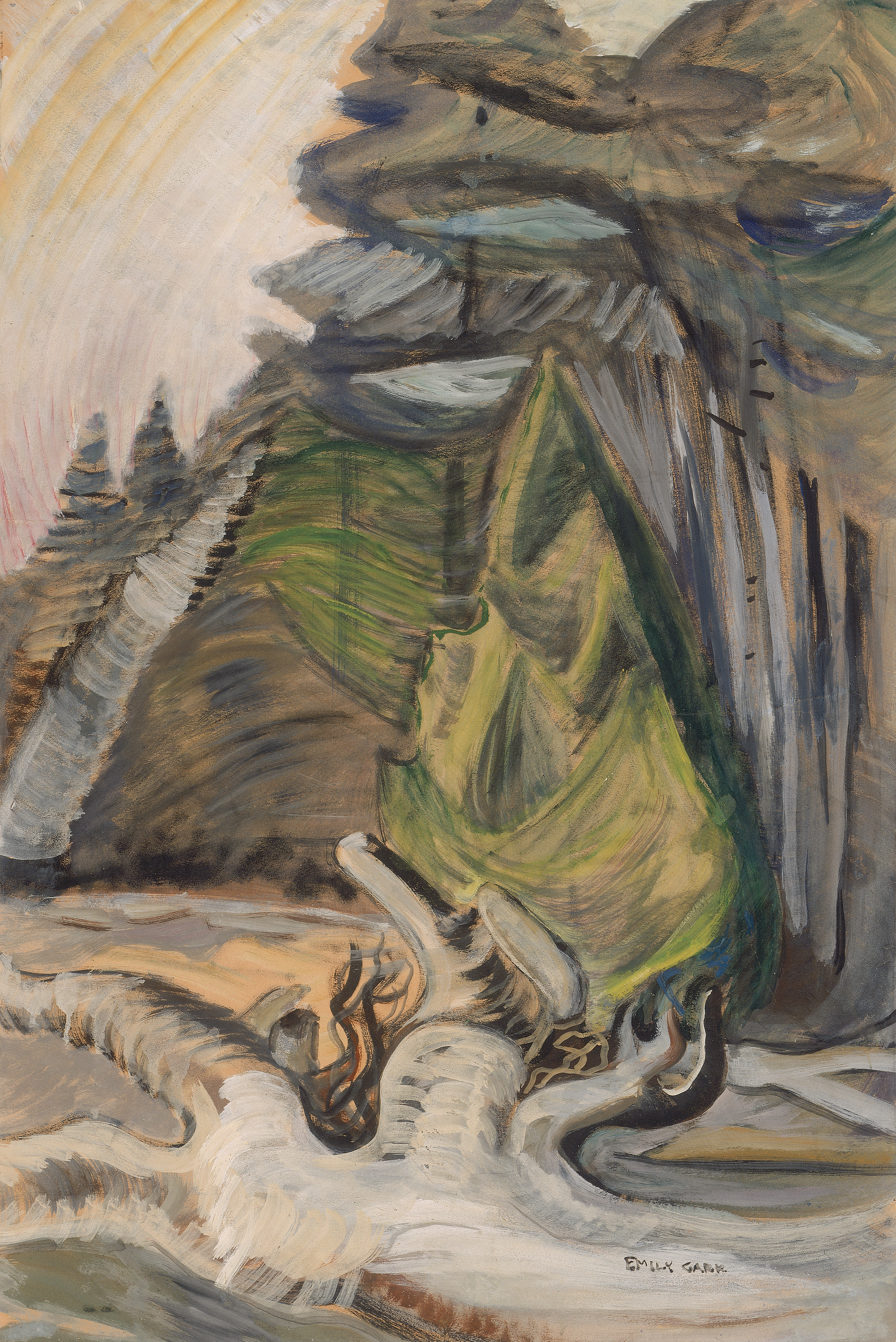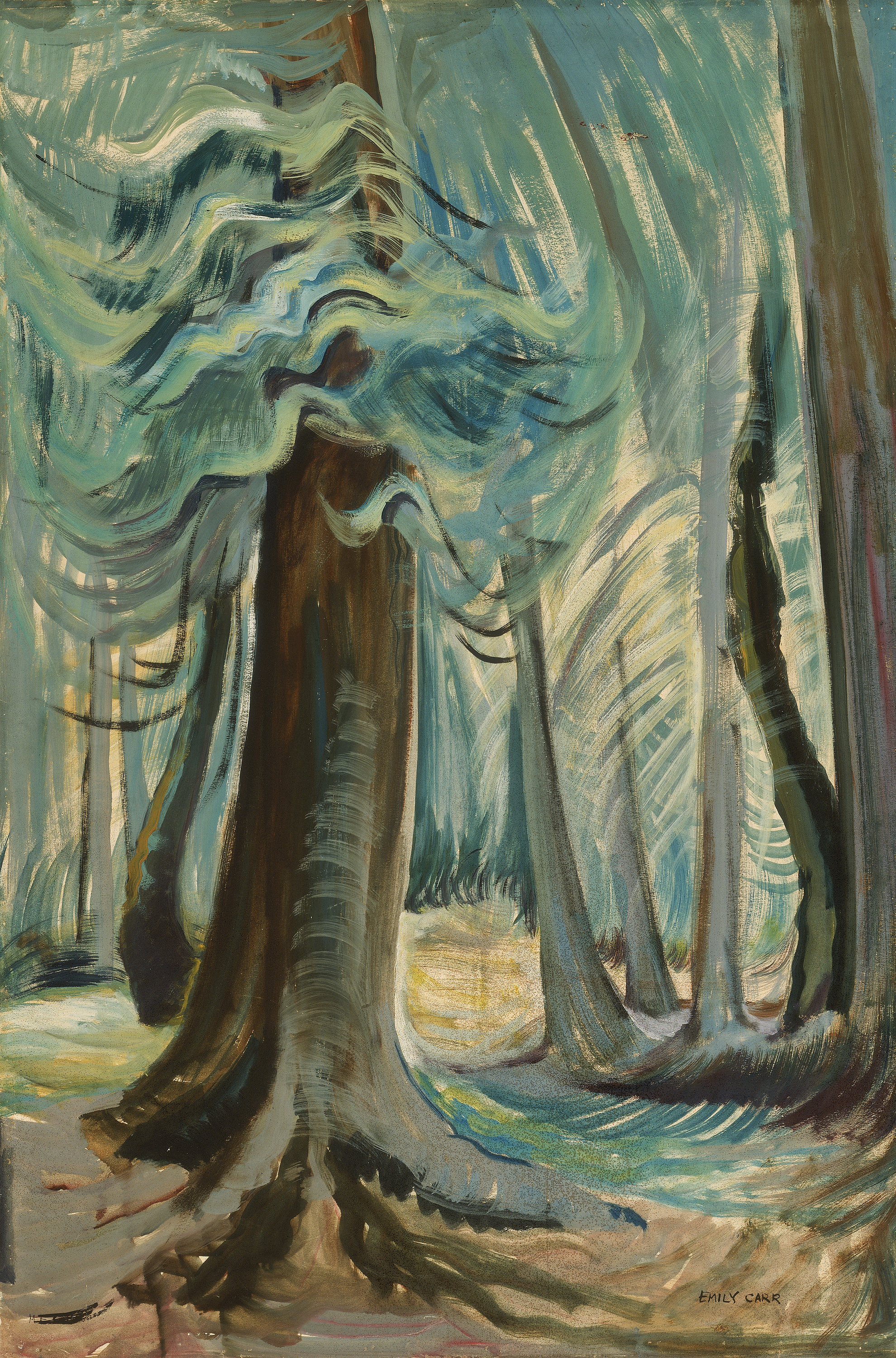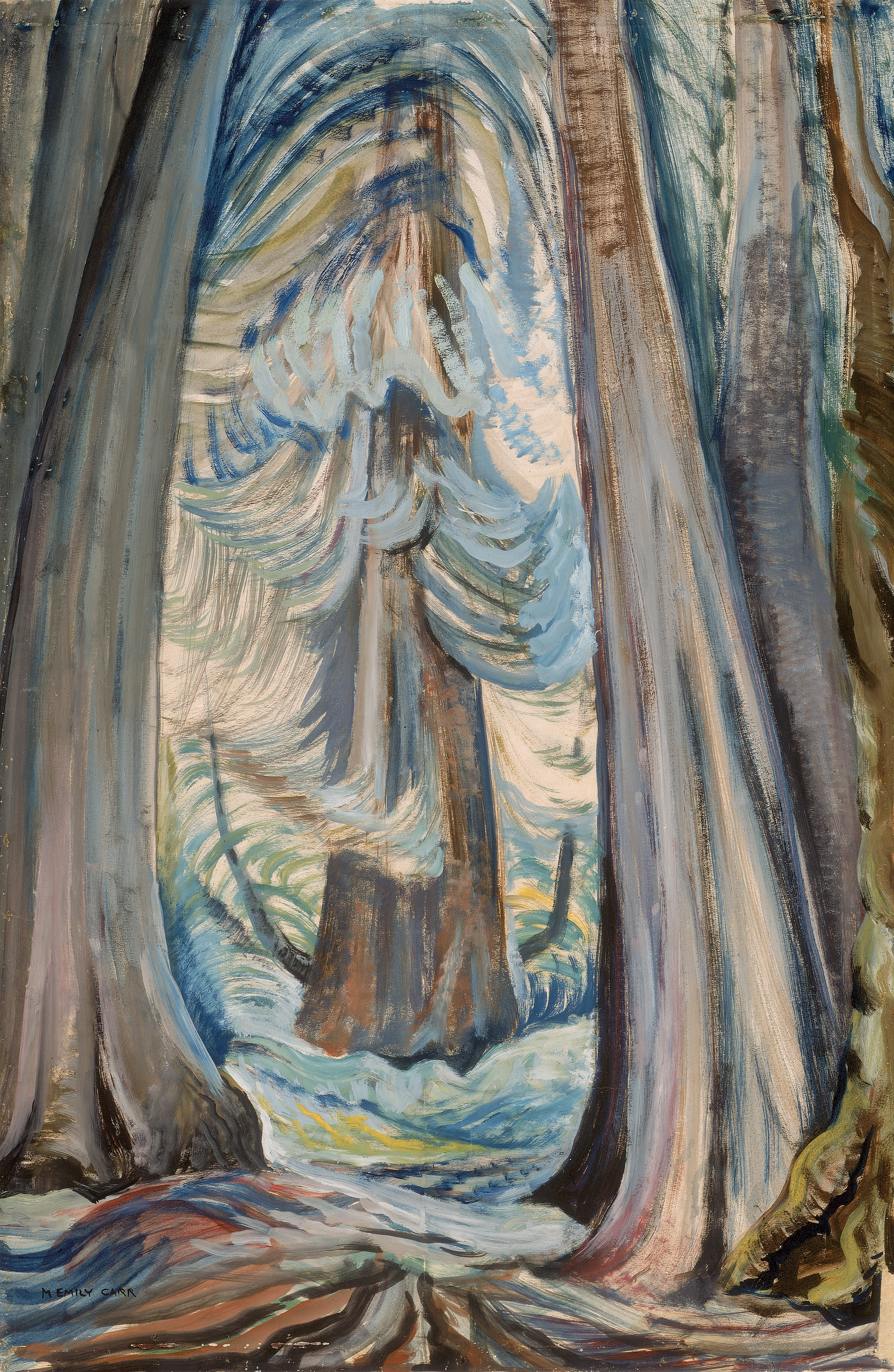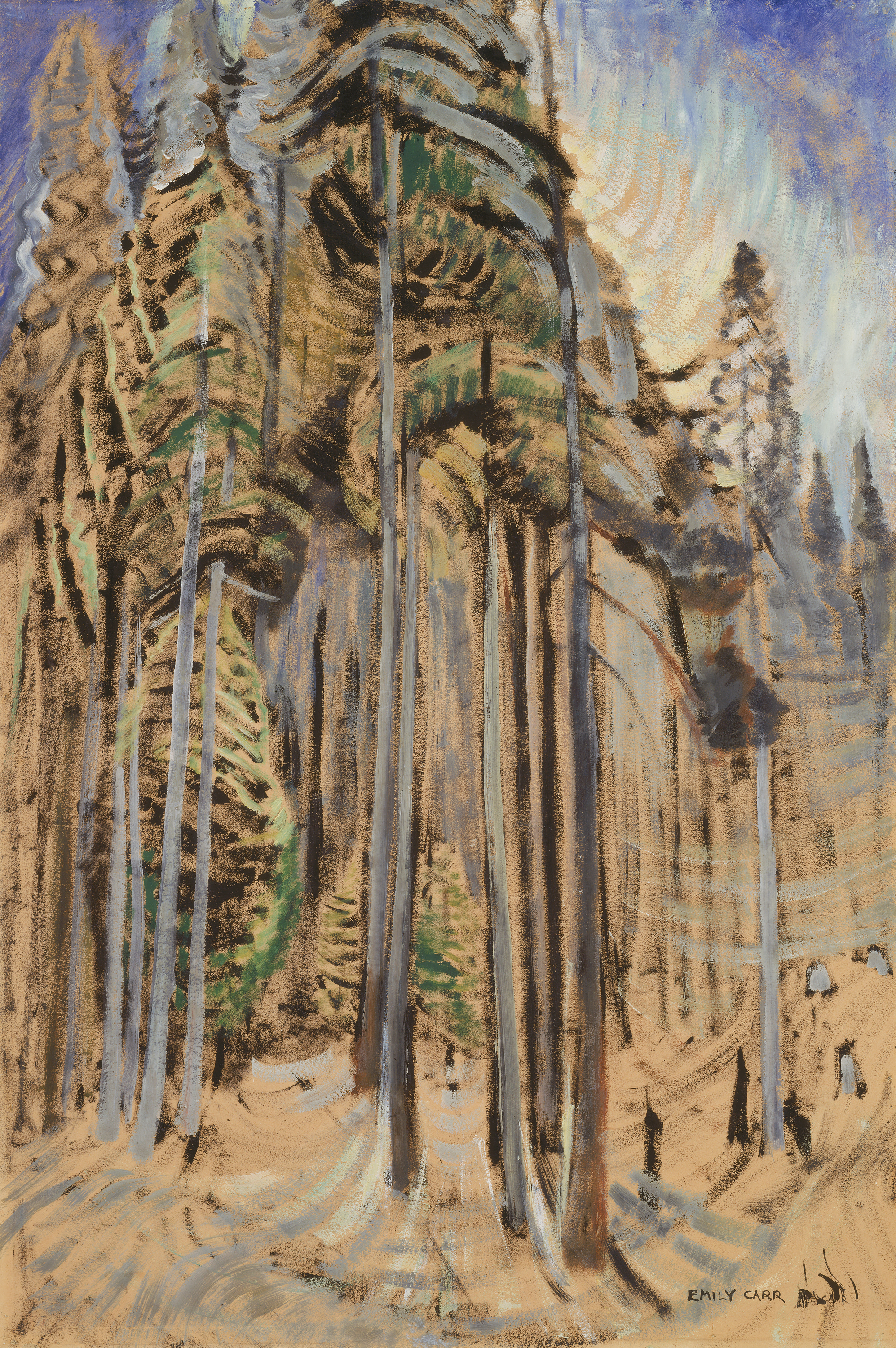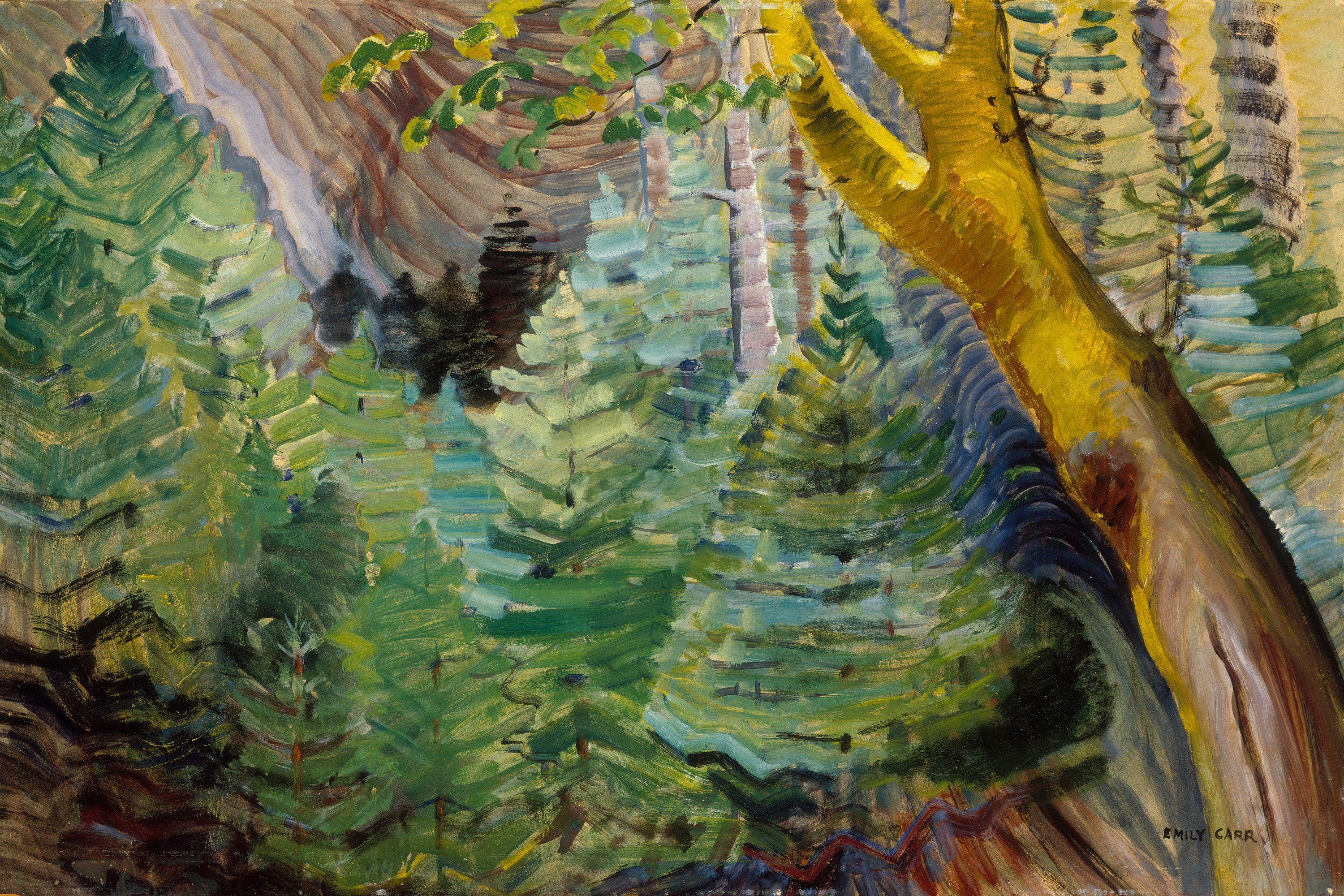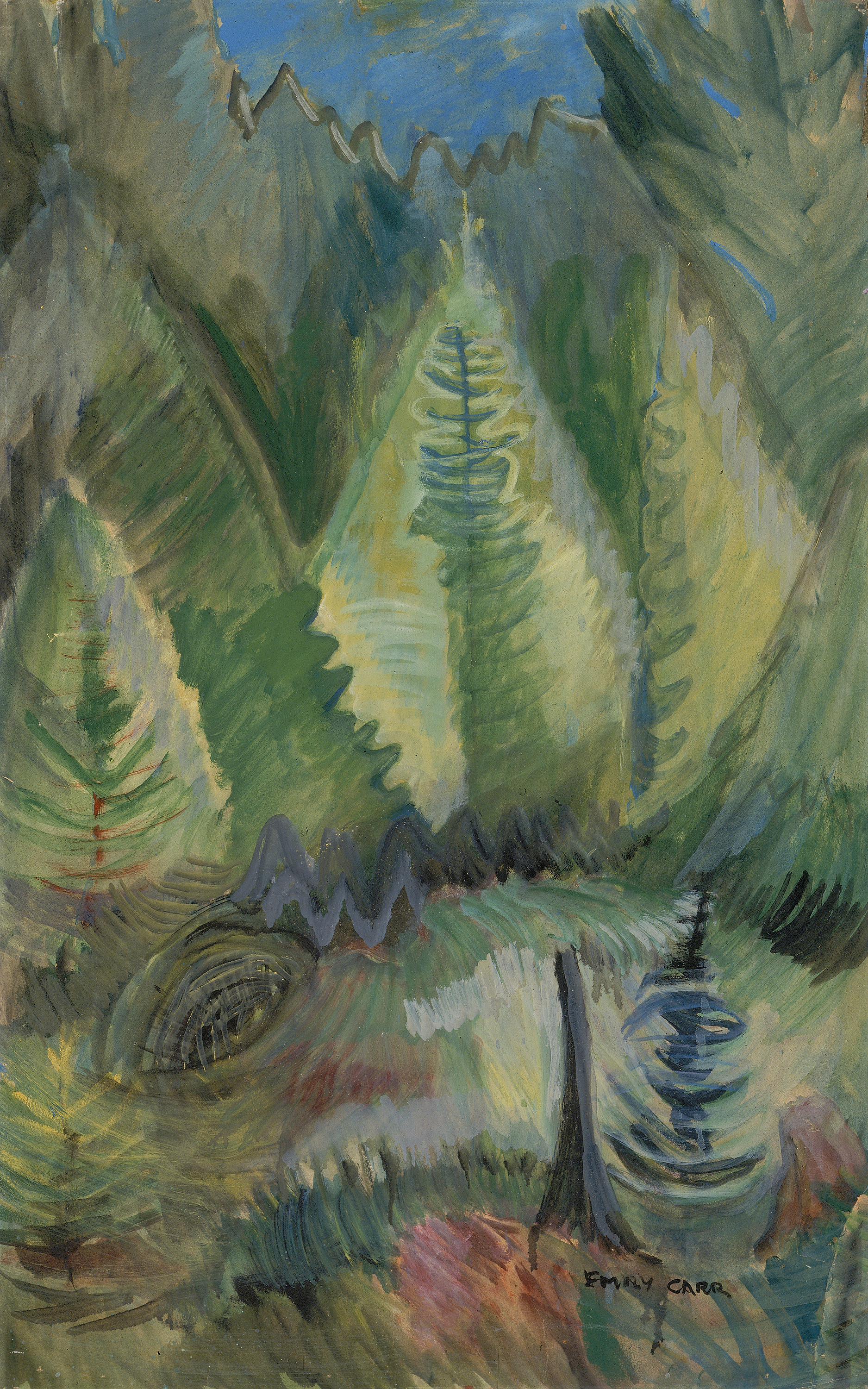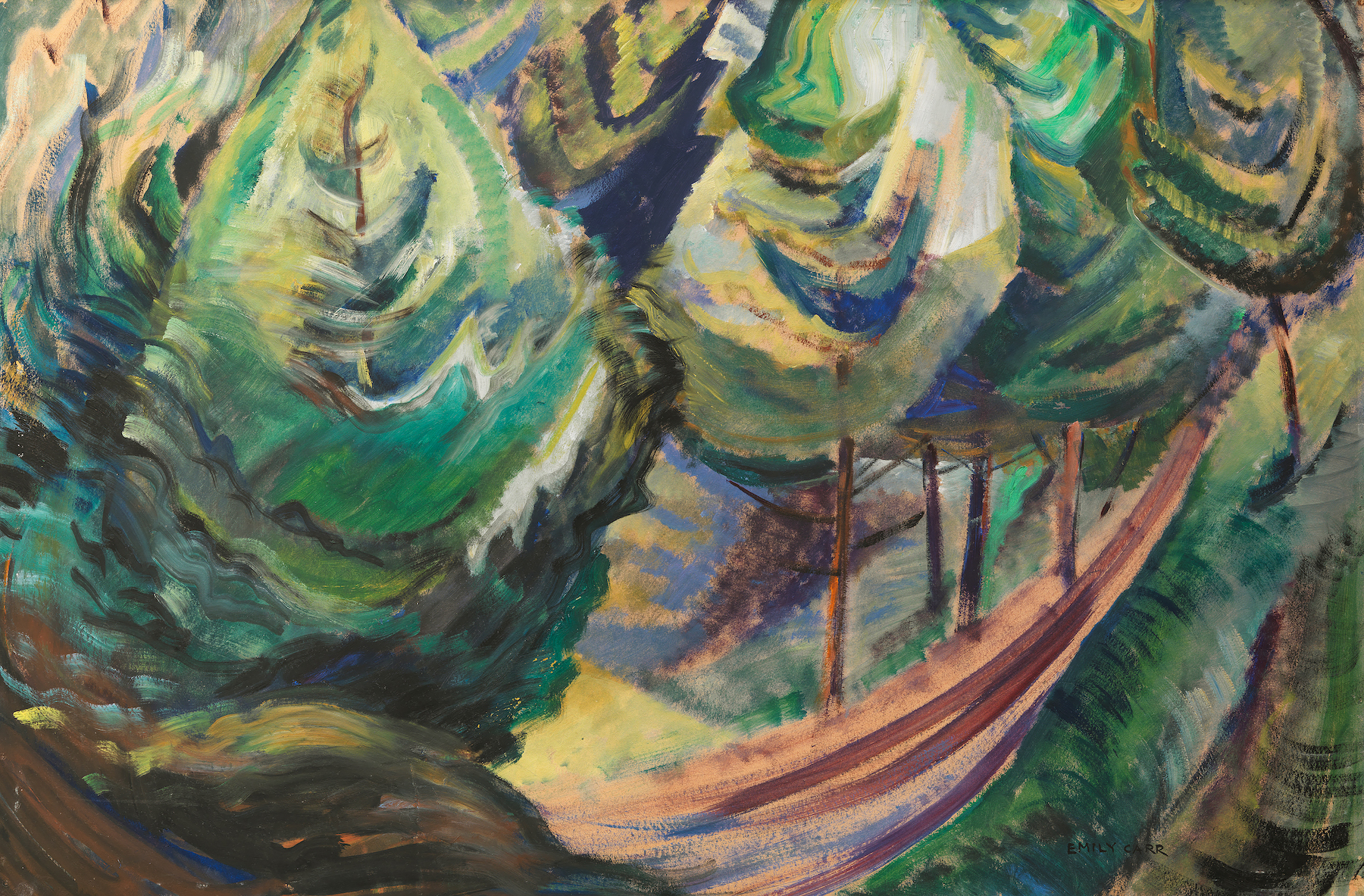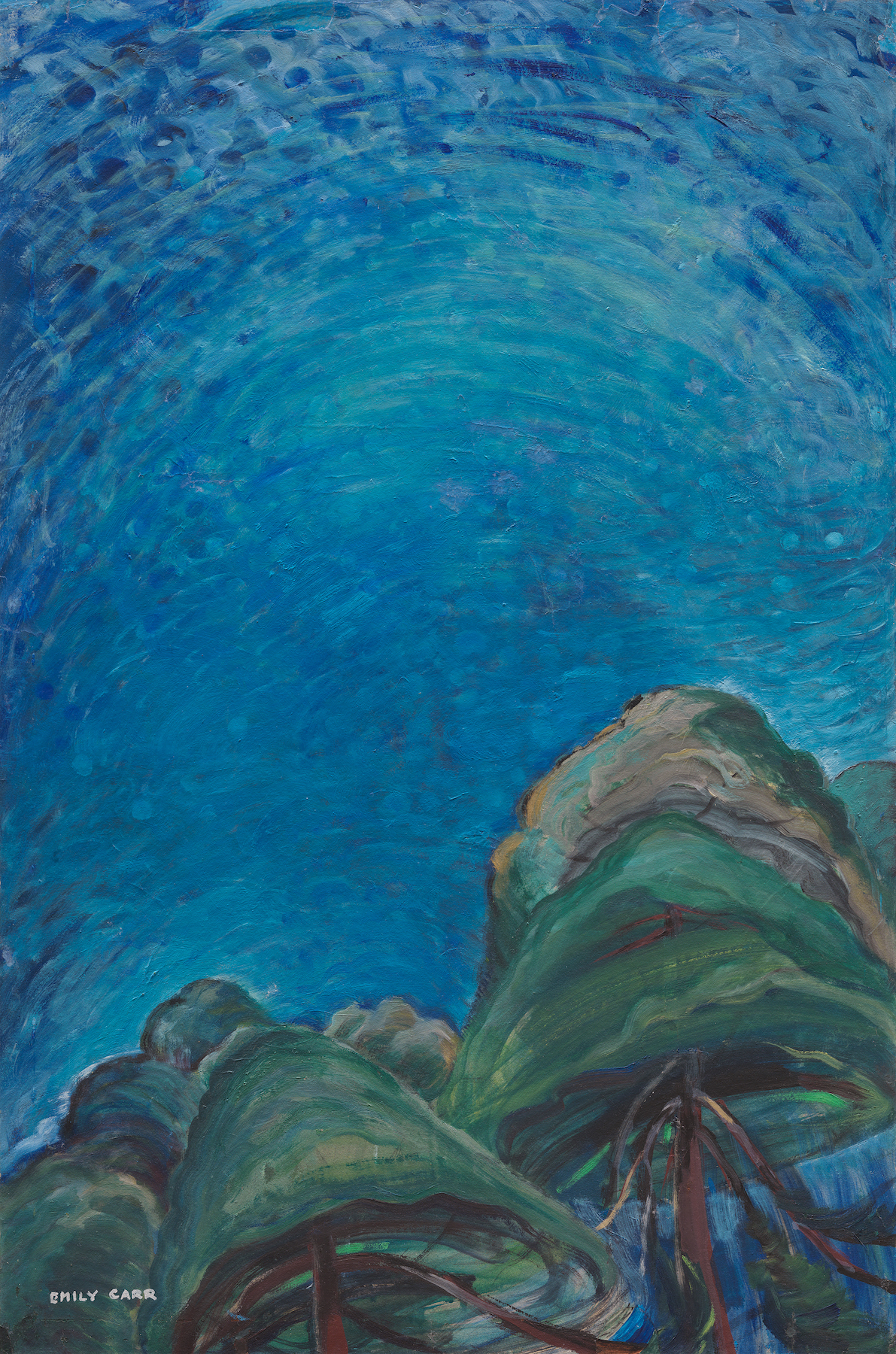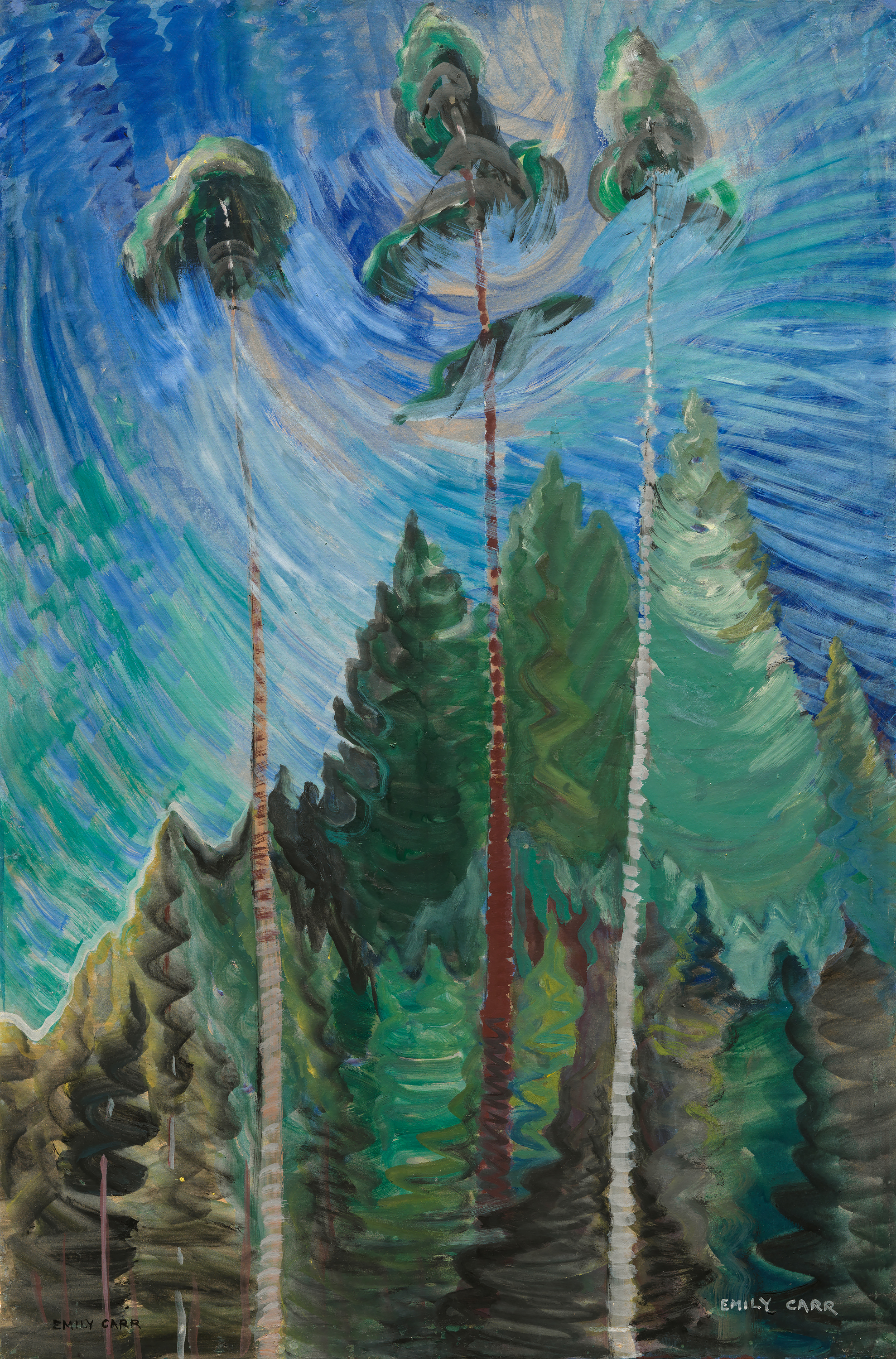In a private journal entry from September 1935, Emily Carr described her intimate vision of the forest as an overwhelming physical presence, a joyous world of light, colour and shape:
Nothing is crowded; there is living space for all. Air moves between each leaf. Sunlight plays and dances. Nothing is still now. Life is sweeping through the spaces. Everything is alive. The air is alive. The silence is full of sound. The green is full of colour. Light and dark chase each other. Here is a picture, a complete thought, and there another and there… There are themes everywhere, something sublime, something ridiculous, or joyous, or calm, or mysterious. Tender youthfulness laughing at gnarled oldness. Moss and ferns, and leaves and twigs, light and air, depth and colour chattering, dancing a mad joy-dance, but only apparently tied up in stillness and silence. You must be still in order to hear and see. (Emily Carr, 1935)
When Emily Carr resumed her interest in painting in the early 1930s, she turned her attention to the forest landscape. She was, by this time, no longer interested in simple documentary images of the forest. Rather, she wanted to produce a thing that took on the character and form of the forest itself. This was achieved through the use of materials that shared a fluidity, translucency and sense of movement that closely matched her experience in the woods.
Describing her new technique to the curator at the National Gallery, Carr wrote:
It is a kind of sketching medium I have used for the last 3 or 4 years. Oil paint used thin on paper… It is inexpensive. Light to carry and allows great freedom of thought and action. (Emily Carr, 1937)
Her new materials—heavy construction paper, white house paint, oil paints, charcoal and gasoline—allowed for the swift production of evocative images. She could work on-site, in the forest, at a scale and with a sense of spontaneity that mirrored forest life.


